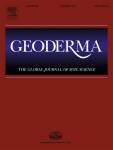DOI:
http://dx.doi.org/10.1016/j.geoderma.2017.01.002Altmetric score:
Dimensions Citation Count:
Publication year
2017
Authors
Minasny, B.; , Malone.B.P.; McBratney, A.B.; , Angers.D.A.; , Arrouays.D.; , Chambers.A.; , Chaplot.V.; Chen, Z.; Cheng, K.; , Das.B.S.; , Field.D.J.; , Gimona.A.; Hedley, C.B.; Hong, S.Y.; , Mandal.B.; , Marchant.B.P.; , Martin.M.; McConkey, B.G.; , Mulder.V.L.; , O'Rourke.S.; , Richer-de-Forges.A.C.; , Odeh.I.; , Padarian.J.; Paustian, K.; Pan, G.; , Poggio.L.; , Savin.I.; , Stolbovoy.V.; , Stockmann.U.; , Sulaeman.Y.; , Tsui.C.; Vågen, T-G.; Van, Wesemael.B.; Winowiecki, L.A.
Keywords
greenhouse gases, climate change, food security, soil organic matter, greenhouse gases, agricultural soils, soil conditioners























